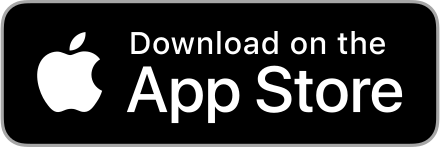As the number of us working from home has risen significantly over the last few months, companies have been quick to share any tips and tricks to help us all stay productive and connected during this difficult time.
Everything from video call etiquette, to virtual meeting tips, to Tom Ford's How to Look Good on Webcam, there is a wealth of useful information springing up all over the internet, with everyone keen to share best practice.
However, before a virtual meeting can be fully productive, it needs to be fully functional. What optimum functionality of your virtual meetings looks like will vary with the specific needs and requirements of your organisation. But if you are an organisation that places significant emphasis on:
- Due process
- Accountability & transparency
- Security
- Managing multiple stakeholder contributions
Then you need a virtual meeting platform that is able to support you in working towards these requirements.
Online conference call providers have been vital for the business continuity of companies around the world. While our last blog addressed the way you wouldn't eat soup with a fork (or conduct formal meetings with Google Drive + Hangouts..) this time we'll be evaluating the best digital toolkit for remote meetings. Microsoft Teams and Zoom are the de facto communication tool for the digital workplace but what exactly can (and can't) offer for your meetings process.
Spike in usage of Teams and Zoom
Despite some early server wobbles as millions of users flocked to sign in at once, Microsoft Teams has been establishing itself as an essential remote working tool. With Jared Spataro, Corporate VP for Microsoft 365, commenting in a recent blog on the 'very significant spike in Teams usage...now have more than 44 million daily users. Those users generated over 900 million meeting and calling minutes on Teams daily in a single week'.
Similarly, Zoom has seen its usage spike from around 10 million daily meeting participants in late 2019 to 200 million a day in March and around 300 million a day by April. This surge in popularity has not occurred unchecked. As governments and big businesses moved to conducting their meetings on Zoom, there was a renewed focus on its security credentials. It came up short, was accused of misleading users over its end-to-end encryption claim, but in fairness has worked well to patch and update the most glaring security issues.
The bottom line is Microsoft Teams and Zoom have become an essential feature of our remote working lives. Productive communication between teams, individuals and organisations has never been more important for business continuity, boosting staff morale and ensuring clarity in how to respond to an ever-shifting business environment.
But what are the implications of the rise of Teams and Zoom for meeting functionality, corporate governance, and organisational accountability & transparency?
What Teams Can Offer
- Segregate your organisation/department into smaller groups called ‘Teams’
- Instant messaging function, both 1 to 1 between users & between entire ‘Teams’
- Online calling – Audio + Video
- Screen sharing in calls
- Instant file sharing between users
- Allow users to work and collaborate on office documents directly on Teams in Microsoft Office programmes.
- Often included in Microsoft 365 for enterprise package, so ‘cost’ seems like useful add-on.
What Zoom Can Offer
- Dedicated platform for online calling – Audio + Video
- Screen sharing
- Integrated calendar function
- Built in recording and transcript options
- In-meeting engagement tools (virtual hand raising and reactions, polling)
- Can highlight/annotate sections when screen is being shared.
- Free plans available
As shown above, Teams and Zoom have a range of useful features to support effective communication between different parts of your organisation. However, more formal meetings require a complete toolkit.
Do your meetings...
...need a record of who changes/has access to a file?
...deal with a range of sensitive information? And as such have GDPR compliance implications to be wary of?
...benefit from granular access controls?
...have a variety of stakeholders & decision makers that need to review, comment and sign off on documents?
...needs a consistent business continuity message delivered to senior management teams?
What Teams & Zoom struggle with (and how Convene can help)
- Provide a central repository for documents to be securely held, keep a record of who (individuals and groups) that have access to a particular document and provide varying levels of access/privilege to a file.
> Convene does all of these things, helping ensure compliance to any data safety regulations. You can view who has opened what and when using Convene’s audit trail function. - Provide a secure way to view documents/files offline
- Data is at rest when hosted on Teams. When downloaded, it is downloaded as an unencrypted copy.
- Both very reliant on screen sharing.
> In Convene, participants have their own ‘copy’ of a document, and can decide to make their comments/annotations visible to certain participants - Post meeting distribution. Zoom can save jpeg/pdf of annotations and comments, whereas with Teams users have to manually consolidate comments/annotations.
> In Convene, all material including annotations can be automatically consolidated and uploaded into a pdf file. Any actions arising can be specifically allocated to relevant individuals and they will be reminded via email.
Supporting good governance
These are not things that are possible or easy to do Zoom & Teams, and why should they? They are not a dedicated meetings platforms. They are online conferencing and collaboration tools, and by all accounts, are doing an excellent job of being that.
But there are a number of components to successful, secure meetings, and clear communication is just one of those components. To help your more formal Board, trustee, or senior management meetings stay productive while meeting governance and compliance needs, consider how Convene can help.
To see our full range of features and how they can support good governance practices in your organisation, click here.
Introducing: Convene Audio-Conferencing
In the past, if clients wanted to meet remotely using Convene (which they often did) we would recommend using some conference call software to help everyone communicate. You will no longer have to rely on third-party providers to do this.
Convene now features Audio-Conferencing - meaning your meeting toolbox can be more complete than ever. Have access to all the existing features of Convene, whilst viewing, annotating and discussing documents on one, integrated platform!








